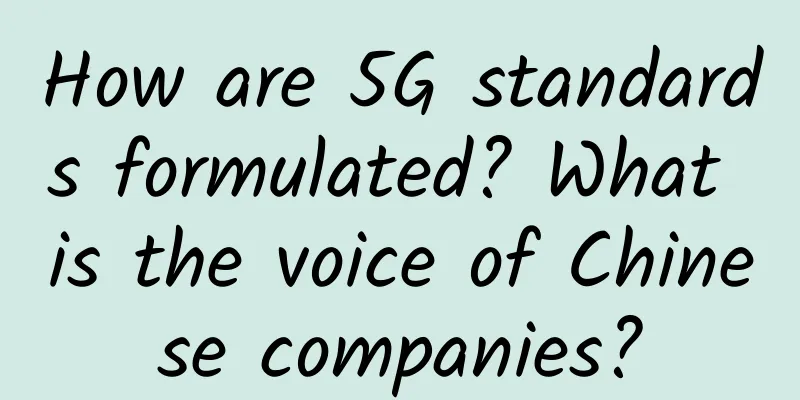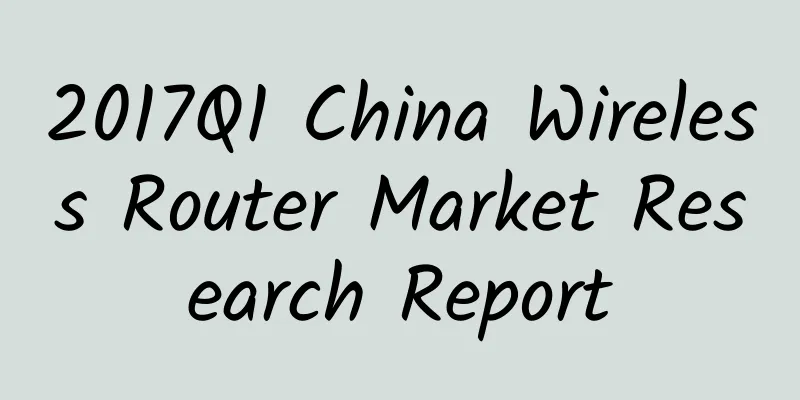How are 5G standards formulated? What is the voice of Chinese companies?

|
The 5G standard is composed of many technologies, and coding is a very basic technology. In the 5G-related standards, the major camps in the world once had fierce debates on the channel coding standards. In 2016, Polar, which was strongly promoted by Chinese communications companies, became the control channel coding. This was China's first breakthrough in the field of channel coding, laying the foundation for China to gain more say in the 5G standard than before. "From this perspective, China can be said to have ranked among the top in the world to a certain extent." From May 21 to 25, the 3GPP working group of the International Mobile Communications Standardization Organization held the last meeting of the first phase of 5G standard formulation in Busan, South Korea. It is reported that this meeting will determine the entire content of the 3GPP R15 standard. It is expected that at the plenary meeting held in the United States next month, 3GPP will announce the final standards for the first phase of 5G. So, what kind of organization is 3GPP, which is responsible for the formulation of telecommunications standards? How is the widely watched 5G standard formulated? How much say do Chinese companies have in the process of 5G standard formulation? With these questions, the editor interviewed industry insiders.
Latest: 5G independent networking standards are expected to be released and established next month At this 3GPP Busan meeting, all working groups developing 5G wireless technologies will gather together at this meeting to finally determine the relevant standard technologies for the commercialization of 5G RAN. About 1,500 standard experts from chipset, mobile phone and equipment suppliers, mobile operators, etc. will attend the meeting to complete the first phase of 5G standards. These include 5G wireless access technology that provides ultra-high-speed data and ultra-low latency, as well as consistency testing methods for 5G terminals. In short, after the Busan meeting, the independent networking standards in the first phase of 5G are about to be released. Many Chinese companies, including Huawei, OPPO, VIVO and other communication equipment and mobile phone manufacturers, also attended the meeting to discuss and submit proposals. Yang Chaobin, president of Huawei's 5G product line, said that according to the plan, this meeting will complete the standard technology for 5G independent networking (SA), which will be officially announced at the US plenary meeting next month after review and approval. Huawei has also prepared a proposal. After the standard is determined, equipment companies can commercialize equipment based on the standard. Previously, 3GPP determined that 5G standardization is divided into two phases: the first phase starts with R15 as the 5G standard, which was completed in June 2018; the second phase starts with R16 as the 5G standard, which was completed in December 2019. The first phase of 5G standards will be finalized at the 3GPP meeting held in the United States next month. Explanation: How many 5G standards are there? Some readers may be wondering, didn’t 3GPP say last year that it had already finalized a 5G standard? Why is it finalizing it again now? Why is there still talk that the final standard will have to wait until 2019 or even 2020? "The last time the standard for non-independent networking was determined, this time the standard for independent 5G networking will be determined." Senior communications observer Xiang Ligang pointed out in an interview that non-independent networking, to put it simply, is not an independently composed 5G network, but must be integrated with other things, such as networking with 4G or even 3G; while independent 5G networking means a completely complete 5G network without 4G. "In non-independent networking, what is 5G used for? 5G is used as a supplement. The large network is 4G, but in some hot spots, such as the Olympic Games venues, CBD, etc., these local areas use 5G to add hotspots to improve network speed and user perception and experience, but the entire large-scale network still does not use 5G. In contrast, 5G independent networking means that the entire network is completely covered by 5G." Xiang Ligang further explained. "The formulation of independent networking standards means that the deployment standards of the entire 5G network have been improved," said Xiang Ligang. Non-independent networking focuses on hotspots and solves the problem of local hotspot coverage in a small area. Now, under the independent networking standards, 5G comprehensive network coverage problems can be solved. Therefore, the establishment of this standard is very important. It can be considered that the 5G standard has gone a step further and become more complete. Interpretation: What kind of organization is 3GPP? 3GPP is an organization currently developing 5G communication standard technology, with more than 550 companies participating as member companies. It consists of 16 working groups responsible for developing standard specifications for terminal, base station and system end-to-end technology. As can be seen from the name, the organization was established in the 3G era. In 1998, several telecommunications standard organization partners signed the "Third Generation Partnership Program Agreement" and developed globally applicable technical specifications and technical reports for the 3G era. Since then, 3GPP has continued to the 4G era and then to the 5G era. Independent analyst Fu Liang told the Beijing Youth Daily that the voice of 3GPP is determined by the company's historical contribution to the organization. Several major equipment manufacturers, such as Qualcomm and Intel, have a greater voice and will serve as chairman and vice chairman of the group. Currently, major communications equipment manufacturers include Huawei, ZTE, Nokia, Ericsson, etc. China's wireless communication standard research group joined 3GPP in 1999. Subsequently, with the development of Chinese manufacturers and operators, China's position in 3GPP has become increasingly important. According to data, there are currently dozens of Chinese companies or institutions that have become partners of 3GPP, including equipment manufacturers Huawei, ZTE, Datang, Putian, Xinwei, chip manufacturers HiSilicon, Spreadtrum, etc., mobile phone manufacturers VIVO, OPPO, Nubia, Coolpad, Xiaomi, operators China Mobile, China Unicom, China Telecom, and China Academy of Information and Communications Technology, etc. Revealed: How are 5G standards established? According to the 5G network standard formulation process previously announced by 3GPP, the entire 5G network standard will be completed in several stages. In the R15 stage, it is expected that by June 2018, the 5G standard for independent networking (SA) will be completed, supporting enhanced mobile broadband and low-latency and high-reliability Internet of Things, and completing the network interface protocol. In the R16 stage, it is expected that by December 2019, the complete 5G standard that meets all the requirements of the ITU (International Telecommunication Union) will be completed. The full approval of the entire 5G standard at the ITU meeting is expected to take until 2020. A manufacturer revealed that the working method of 3GPP is to reach a consensus. The only requirement for a proposal to be passed is that no company opposes it, not how many companies agree with it. Based on the patent reserves and interest considerations of each manufacturer, each proposal is initially opposed by many companies, and proposals are rarely passed intact. Therefore, many proposals need to be left for further discussion at the next meeting. It is also necessary to constantly deny and revise some proposals in order to achieve the result of unanimous approval by companies with greater voice. According to insiders, during the two meetings, manufacturers with important patents will fight for and mediate, such as reducing or exempting some patent licensing fees for the other party, in order to "pull votes". Therefore, each company may update its position based on maximizing its own interests and vote for different plans in the next vote. It is in this process that the plan is finally unified. Why is the ITU certification involved? Xiang Ligang explained that as an international standardization organization that promotes 5G standards, 3GPP's members are mostly composed of professional associations and enterprises. Global companies can apply to join. It promotes technical standards reached on the basis of repeated in-depth discussions between industries, enterprises and experts. After the 5G technical standards are determined by 3GPP, they will also be recognized by the ITU International Telecommunication Union. "To a certain extent, ITU members represent the positions of their countries and governments. The approval of the ITU meeting is equivalent to a 'stamp' certification to a certain extent, which means that a standard plan is recognized as the final official result, and it also means that this international standard is officially determined," said Xiang Ligang. Focus: How much say do Chinese companies have in 5G standard setting? What status do China and Chinese companies have in the process of promoting 5G standards, and what role can they play? Professionals pointed out that the 5G standard is composed of many technologies, and coding is a very basic technology. In the 3G and 4G era, although China has dominated the TD-SCDMA and TD-LTE standards, it still does not have much say in coding. The channel coding of 3G and 4G still uses Turbo code. In the 5G-related standards, the major camps in the world once had fierce debates on the channel coding standards. In 2016, LDPC, which was supported by many US operators and companies, became the data channel coding, and Polar, which was promoted by Chinese communications companies, became the control channel coding. This is China's first breakthrough in the field of channel coding, which reflects China's strength and lays the foundation for China to gain more say in the 5G standard than before. "From this perspective, China can be said to have ranked among the world's top countries to a certain extent. But we must also understand that the so-called world's top does not mean permanent surpassing, nor does it mean that all countries will adopt China-led technology. After all, the 5G standard is an international standard, and all countries in the world have a say." Professional analysis pointed out. Xiang Ligang also said that taking the 3GPP standard discussion as an example, it is difficult to measure the weight of opinions held by a certain company or companies participating in the discussion and voting in the establishment of a standard. This is because there are many factors involved in reaching the final result, which is not a simple accumulation of votes, but requires extensive discussions of the entire standard assessment organization on various technical groups, multiple rounds of voting results, and comprehensive considerations by the expert chairman team. However, overall, the industry generally believes that the United States, China and the European Union are currently important forces in promoting 5G and 5G standards. "China has become one of the important players in the promotion of 5G and the establishment of international standards," said Xiang Ligang. Focus: The key to the 3GPP meeting is the fight for the right to speak on patent rights The right to speak for 5G is the number of core patents that are finally approved. Liu Qicheng, editor-in-chief of Communication World All Media, said that 3GPP researched unified relevant standards, which became the only standard in the international 5G field after being recognized and promulgated by the International Telecommunication Union. Subsequently, manufacturers around the world must produce equipment, network, and access terminals in accordance with this standard. However, the patent rights under the standard are in the hands of a few manufacturers, so other companies need to obtain patent licenses from manufacturers with core patents, some of which adopt the method of patent cross-licensing and some of which adopt the method of purchasing. Patent cross-licensing means that both parties open up the right to use some patent technologies of equal value and the right to sell related products to each other to achieve sharing. Usually, large companies will adopt the method of patent cross-licensing, and some will also make some economic compensation to each other based on the value difference of the patent portfolio; small companies can only obtain patent licenses by purchasing. Last year, Qualcomm announced its 5G patent fee plan, charging 2.275% to 5% for each mobile phone using its patents. In other words, most domestic Android manufacturers need to pay Qualcomm 68 to 150 yuan in patent fees for every 3,000 yuan mobile phone they sell. Qualcomm has occupied a favorable position in communication technology patents since the 3G era, and its "standard essential patents" ranked first in the 3GPP standards of the 4G era with a share of 10.5%. In other words, almost all 3G/4G/5G mobile phones will inevitably use Qualcomm's patents and need to pay patent licensing fees or obtain patent cross-licensing. In fact, all manufacturers have already begun to deploy 5G and apply for corresponding patents. ZTE said that in the field of 5G, ZTE has accumulated more than 1,500 patent applications, repeatedly achieved technological breakthroughs, and its first Pre5G Massive MIMO base station has been commercialized on a large scale in China and Japan. Samsung said that Samsung is in a leading position in 5G. As of this month, with 1,254 patents, Samsung Electronics ranks first in the list of 3GPP member companies that have applied for 5G standard patents to the European Telecommunications Standards Organization (ETSI). Huawei released the first 3GPP standard 5G commercial chip and terminal at the beginning of the year, and has achieved multiple 5G deployments at home and abroad. |
Recommend
Liu Liehong of the Ministry of Industry and Information Technology: As of October, more than 700,000 5G base stations have been put into operation
Since the issuance of 5G commercial licenses in m...
HTTP 403 Error: What it means and how to fix it
While we’re all so used to 404 Not Found pages, a...
Should I switch to a Wi-Fi 6 router as the holidays approach?
If 2019 is the first year of Wi-Fi 6 commercializ...
Zhang Feng attended the 2019 World Telecommunication and Information Society Day Conference and delivered a speech
[51CTO.com original article] On May 17, 2019, the...
The number of 5G package users far exceeds the number of 5G mobile phone users. Are you infected by 5G?
If we distinguish by telecommunications scale, th...
Telecommunications industry becomes the largest AI market and will reach an important turning point in 2021
Tractica/Ovum, a world-renowned market research c...
VMISS 30% off all items starting from 18 yuan/month, Korea/Japan/Hong Kong CN2/Los Angeles CN2 GIA/9929 optional
VMISS released a 30% discount coupon during Black...
If you don't even know how to attack and defend a switch, what's the point of being a network engineer?
Why should we care about switch security??? Verti...
We keep talking about 5G, but do you really understand the 5G market? What is the current situation?
2020 is a milestone in the development of China&#...
5G network construction 80%: 5G robots are about to usher in a new turning point
Recently, according to CCTV News, China had compl...
Rabisu: $2.9/month VDS-dual core, 4G memory, 40G NVMe, 1Gbps unlimited traffic, Türkiye/UK/US/Bulgaria data centers
Rabisu was founded in 2016. It is a Turkish merch...
What to do if the Wi-Fi signal at home is not good? Here are 4 tips
Everyone needs Wi-Fi at home, but for various rea...
V5.NET: Hong Kong CN2 server limited 30% off, dual-channel E5 monthly payment starts from 625 yuan
V5.NET is offering a limited promotion for the HK...
China only holds 10% of 5G patents? Don’t worry, there is still a long way to go.
After many rounds of 3GPP meetings and lengthy te...
Ericsson and Swisscom sign standalone 5G network agreement
Ericsson and Swisscom have signed an expanded 5G ...









